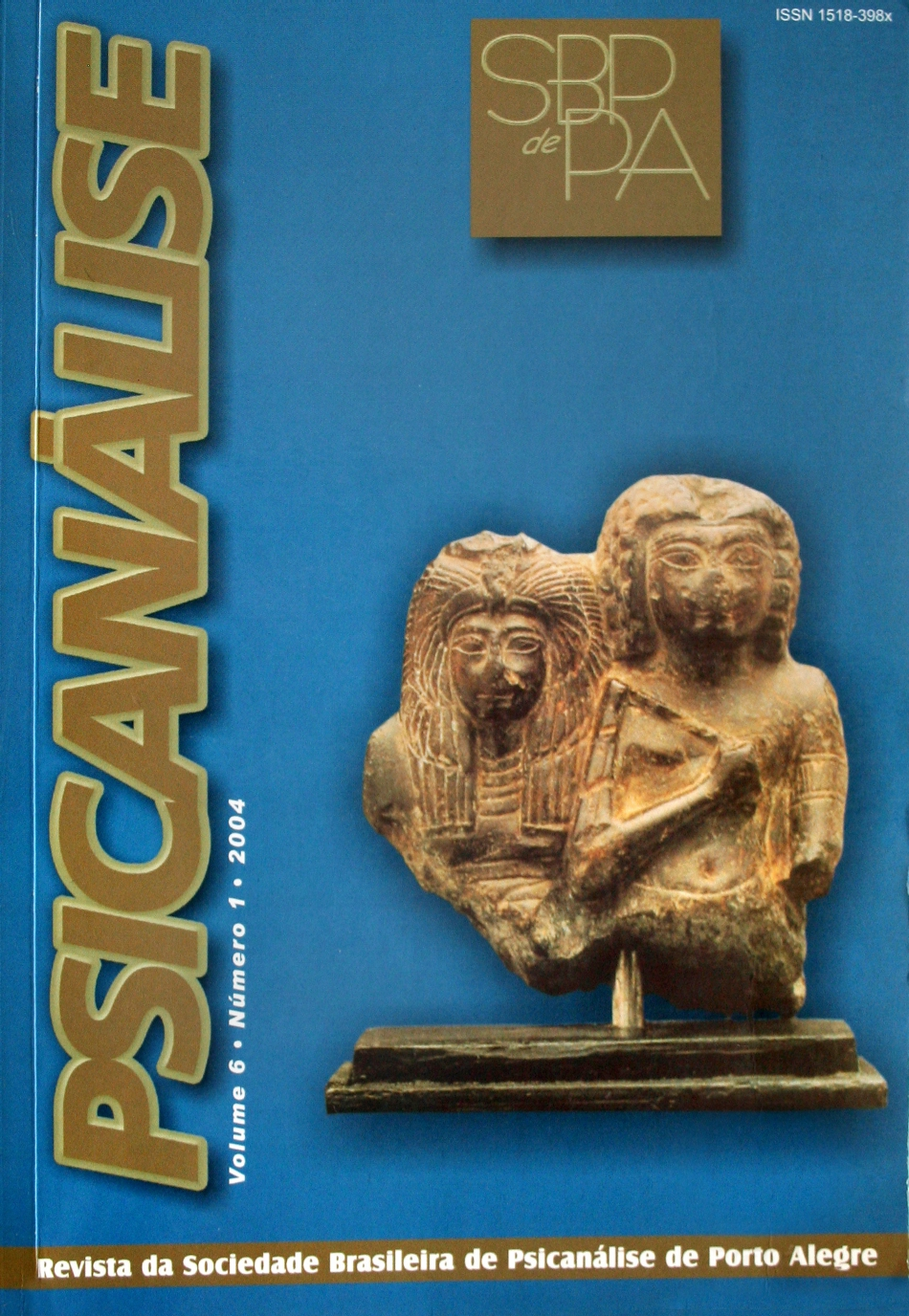Disavower study in addition case
Maradona with Sade
DOI:
https://doi.org/10.60106/rsbppa.v6i1.143Keywords:
Drugs, Psychology of masses, Relationship of object, Autoerotism, NarcissismAbstract
In this work, the author highlights the phenomenon of the psychology of masses through the analysis of an idol, Diego Maradona, and his relationship with the environment that idolises him. He makes a parallel with the work of the Marquis de Sade in which the characters Dolmancé and Eugênia are the protagonists of a perverse relationship between a corruptor and a student willing to learn how to use all the weapons of seduction. The author bases his work on metapsychology by investigating the relationship between being a “mass idol” and autoerotism. He lectures on libidinal evolution and pulsional destiny. He finalises by saying that, in the “Maradona phenomenon”, drugs have become the fuel that drove him into the trap of artistic megalomania, by using the expression “he felt he was God.” He punctuates that the problem of addictions, the behaviour of masses, the dynamics of intersubjective relationships and the alternation of the principal of pleasure and joy, as well as its distribution, are topics that lead to metapsychological developments, thus allowing for a greater growth of psychoanalysis, as well as more effective applications in practice.
Downloads
References
BARANGER, W.; BIS, N.; GOLDSTEIN, N.; et al.. Dolmancé o el corruptor. Revista do XX Symposium de Asociación Psicoanalítica Argentina, APA, t. 1, p.107-113, 1980.
______. La estructura perversa y el concepto de perversión. Revista do XX Symposium de Asociación Psicoanalítica Argentina, APA, t.1, p. 99-105, 1980.
BERNARDI, R. Vulnerabilidad, desamparo social y el desvalimiento psíquico en la edad adulta. Revista Uruguaya de Psicoanálisis, APU, n. 67, p.19-31, 1988.
EY, H.; BERNARD, P.; BRISSET, Ch. (1978). Toxicomanias. In:______. Tratado de Psiquiatria. 8.ed. S.l.: Toray-Masson., p. 351-415.
FREUD, S. (1892-1899). Manuscrito E: Como se genera la angustia. In:______. A.E. v.1 , p. 228.
______. (1895). Obsesiones y fobias. In:______. A.E. v. 3, p.59-82.
______. (1895). Sobre la justificación de separar de la neurastenia un determinado síndrome en calidad de neurosis de angustia. In:______. A.E. v. 3, p.91-115.
______. (1895). La herencia y la etiología de las neurosis. In:______. A.E. v. 3 p.139-155.
______. (1898). La sexualidad en la etiología de las neurosis. In:______. A.E. v. 3, p.251-276.
______. (1905).Tres ensayios de teoría sexual. In:______. A.E. v. 7, p.111-210.
______. (1917). Conferencias de introducción al psicoanálisis. In:______. A.E. v.16, p.262-274.
______. (1920). Mas allá del princípio del placer. In:______. A.E. v.18, p. 375-391.
______. (1921). Psicología de las masas y análises del yo. In:______. A.E. v.18, p. 63-136.
______. (1930). El malestar en la cultura. In:______. A.E. v.21, p.135-140.
KURY, J.. La novela familiar de los perversos. Revista do XXXVI Symposium de Asociación Psicoanalítica Argentina, APA, t.1, p.387-392, 1998.
______. Maradona y la cuestión del ideal. Diário de la Nación, 1994. Nota central.
LAPLANCHE, J.; PONTALIS, J.B. Diccionário de psicoanálisis. 3.ed. [S.l.]: Labor, 1981 . p.336-344.
LACAN, J. (1962). Kant con Sade. In:______. Escritos Dos. [S.l.]: Siglo XXI. p. 744-770.v. 2.
______. (1960). El goce de la transgresión. In:______. Seminario: la ética del psicoanálisis. Buenos Aires: Paidós. p.231-247. v.7.
______. (1960). La pulsión de muerte. In:______. Seminario: la ética del psicoanálisis. Buenos Aires: Paidós. p.248-262. v. 7.
______. (1970). Saber, medio de goce. In:______. Seminario: el reverso del psicoanálisis. Buenos Air es: Paidós. p. 41-56. v. 17.
______. (1970). Verdad, hermana de goce. In:______. Seminario: el reverso delpsicoanálisis. Buenos Aires: Paidós. p.57-72. v. 17.
______. (1972). Del goce. In:______. Seminario: aún. Buenos Aires: Paidós. p.9-22. v. 20.
______. (1972). Dios y el goce de la mujer. Seminario: aún. Buenos Aires: Paidós. p.79-93. v. 20.
MARADONA, D.A. Yo soy el Diego. [S.l.]: Planeta Argentina. 2000.
PESKIN, L. El espesor de la realidad. In:______. Historia. Historiales. Buenos Aires: Kargiemann. 1994. p. 237-257.
ROUDINESCO, E.; PLON, M. (1998). Diccionário de psicoanálisis. Buenos Aires: Paidós. p. 406-409; p.883-891.
Downloads
Published
How to Cite
Issue
Section
License
I attribute the copyrights that belong to me, on this work, to SBPdePA, which may use and publish it by the means it deems appropriate, including on the Internet or in any other computer processing.
















